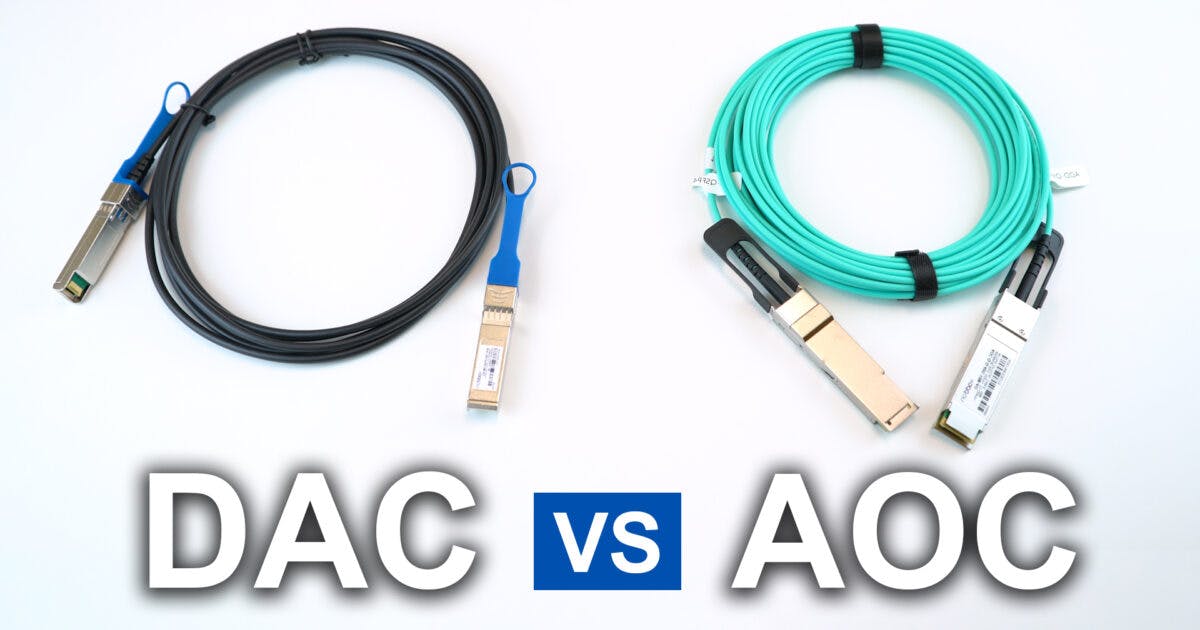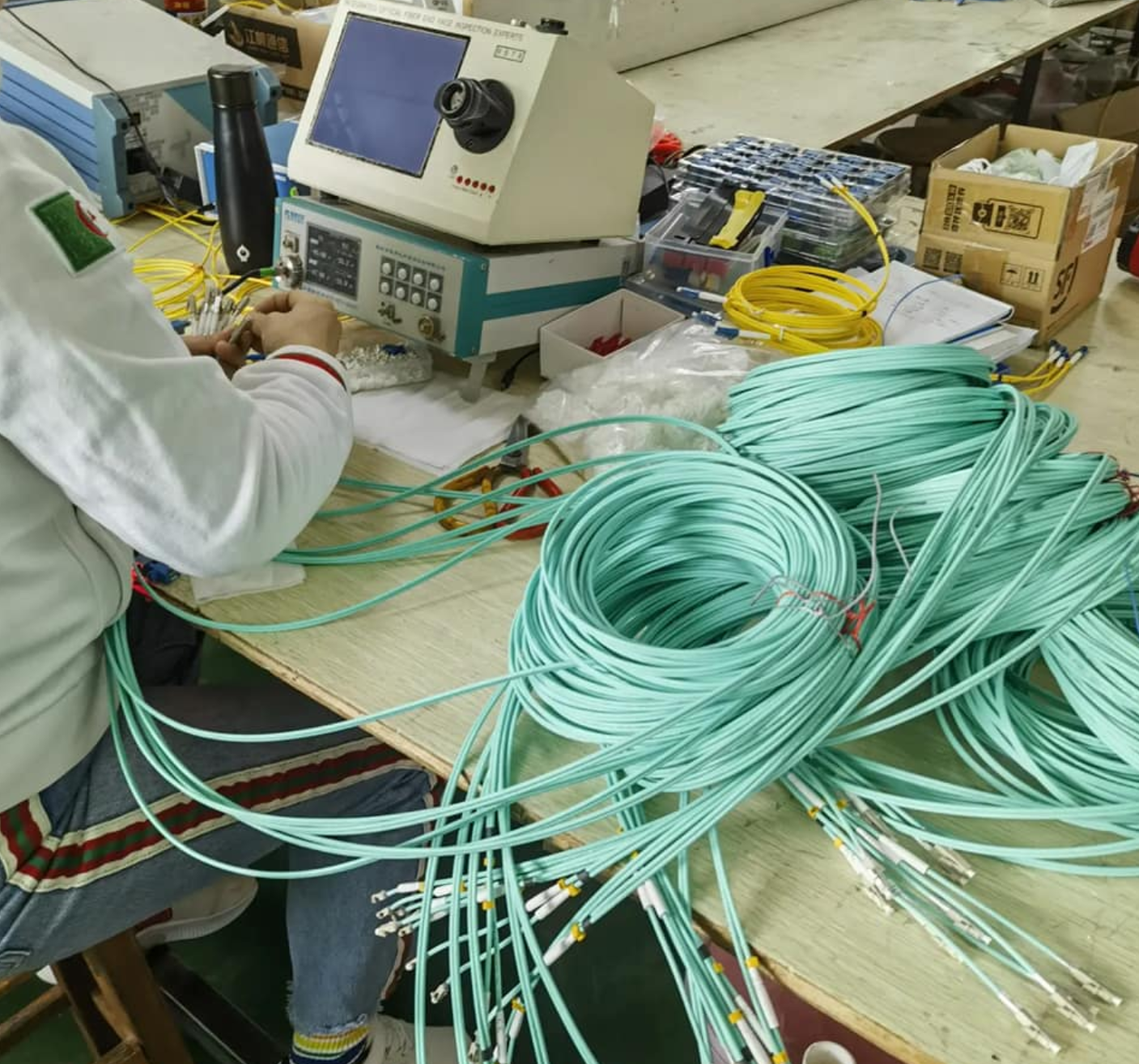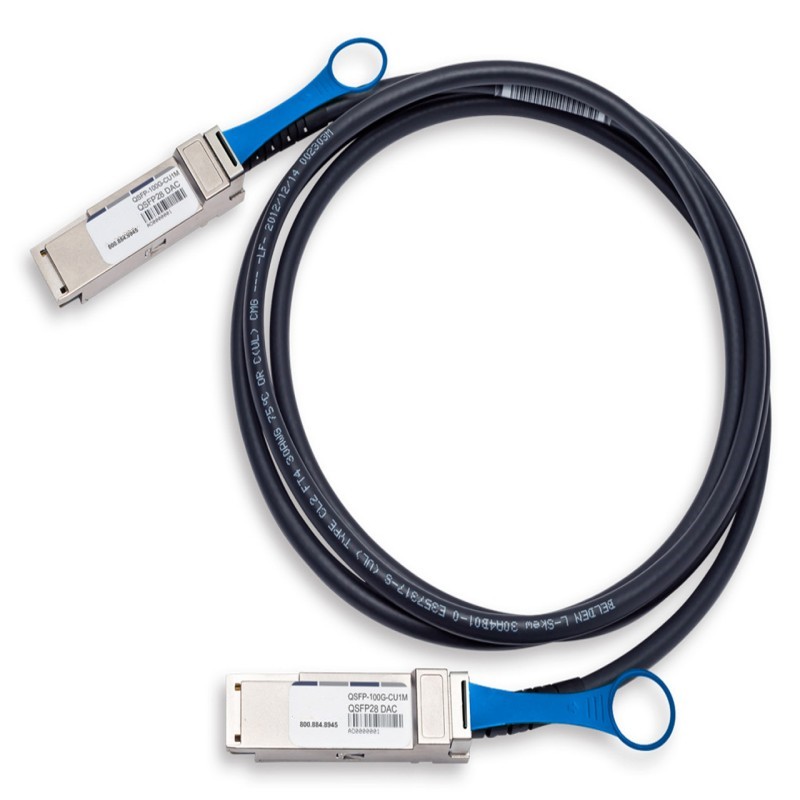AOC Cable vs DAC Cable: Which is Better for You
1. What DO DAC and AOC Cables Have in Common?
Both DAC and AOC are common cabling solutions for data networking and are usually used for high-speed, high-reliability interconnection and transmission required by data centers, high-performance computers, and large-capacity storage devices. Both of their ends have cable assemblies with factory-terminated transceivers, which are connected to fixed ports only. Besides, DAC and AOC cables can be manufactured in different lengths to support different transmission data rates, such as 10G SFP DAC/AOC cable, 25G AOC cable, 40G DAC cable, and 100G AOC cable.
2. Pros and Cons of DAC Cable
Pros of Direct Attach Copper Cable
More Cost-effective— Generally speaking, the price of copper cables is much lower than that of optical fibers. The cost of passive copper cables is 2 to 5 times cheaper than fiber cables of the same length. Therefore, the use of high-speed cables will also reduce the cabling costs of the entire data center.
Lower Power Consumption— High-speed DAC (direct attach cable) consumes less power(the power consumption is almost zero) since passive cables do not require a power supply. The power consumption of active copper cables is generally around 440mW. If you use direct attach copper cables instead of AOC fiber cables, you can save hundreds of thousands of kilowatts of electrical power.
It is more durable–It is designed with a seamless connection form of optical module and optical cable, which reduces the cost and ensures that the optical port is not exposed to dust and other pollutants. Therefore, DAC is less susceptible to damage.
Cons of Direct Attach Copper Cable
One of the disadvantages of DAC cable is that it is heavier and bulkier than AOCs. In addition, it is more susceptible to the effect of electromagnetic interference and attenuation over longer distances due to the electrical signals transmitted between both ends.
3. Pros and Cons of AOC Cable
Pros of AOC
Lighter weight-An active optical cable is composed of two optical transceivers and a fiber optic patch cable, whose weight is only a quarter of the direct attach copper cable, and the bulk is about half of the copper cable.
Longer distances-AOC fiber can provide a greater and longer transmission reach of up to 100-300m due to its better heat dissipation in the computer room’s wiring system and smaller bending radius of optical cable.
More Reliable– Active optical cable is less vulnerable to electromagnetic interference since optical fiber is a kind of dielectric that can sustain a static electric field within it. The bit error rate of the product transmission performance is also better, and the BER can reach 10^-15.
Cons of AOC
The main defect of AOC active fiber cables is that it is a more expensive cabling assembly solution for high-density data center operators. Besides, AOCs are less durable if not managed properly since they are lighter and thinner AOCs are much lighter and thinner which makes them more susceptible to damage if not handled correctly.
4. When do you use AOC Cables?
Nevertheless, the transmission distance between ToRs and edge core switches is usually less than 100m, where Integrated circuits are deployed densely. Therefore, the active optical cable is a better cabling solution for data connection due to its merits of lightweight, small wire diameter, and manageable cabling maintenance. Since the data center has strict specifications on signal transmission, active optical cable is better than twin-ax DAC cable in signal integrity and optical coupling design, greatly reducing the errors in signal processing. Furthermore, the high-frequency EMI signal is processed within pluggable optical modules, AOC fiber cable has a better EMI performance than the DAC cable. Undoubtedly, AOC cable is your first option in the interconnection between switches and switches within short or intermediate reach.
5. When do you Use DAC Cables?
According to the fabric architecture announced by Facebook, a server and Top-of-Rack switches(ToR) constitute the basic unit of the data center. Generally speaking, the distance between a ToR and a server NIC(Network Interface Card) is less than 5 meters. In this situation, DAC cable is more advantageous than AOC cables in the respect of cost, power consumption, and heat dispersion. Thus, DAC is a preferred option for IDC interconnect systems. Besides, on some special occasions, 100G QSFP28 to 4*SFP28 DAC is an alternative direct connection according to the user’s specific demand for the data connection.
Post time: Aug-17-2023








